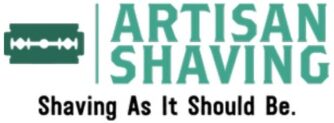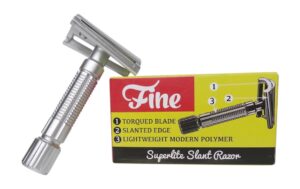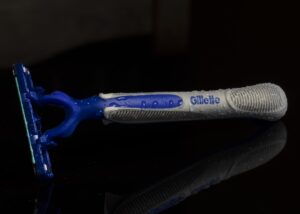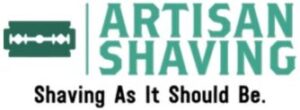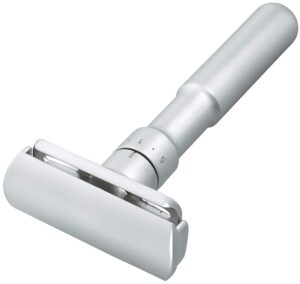When it comes to the battle of the Merkur 34c vs Edwin Jagger de89 it is sure to be a long one. Both safety razors are very popular choices, especially for beginners.
Our winner is the Merkur 34C overall as a small, light, nimble and durable safety razor. However, the handle of the Edwin Jagger DE89 and all the variations of design are certainly areas where it leads.
The DE89 also feels overall heavier and more robust – although in truth it is more prone to breakage. This is quite typical of Merkur’s utilitarian approach versus Edwin Jagger’s more regal quality.
Our Winner: Merkur 34C
Our top pick is the Merkur safety razor by a narrow margin. We believe the brand’s history and focus, build quality, grip and shave performance are well worth the small increase in price.
However, safety razors are very subjective so read on to see how difficult it was to decide which razor was better and see which features mean more to you.
Why Choose These Safety Razors?
Choosing to move away from cartridge razors and go for a safety razor is a great decision. Safety razor blades cost a fraction of cartridge blades. Then there’s the environmental impact of plastic disposable razors. Those are before you even get on to the shaving performance. Safety razors offer a shave that is both closer and more comfortable than modern cartridge razors despite their long history.
Both the Merkur 34c and Edwin Jagger de89 offer great options as the best safety razor for beginners. Indeed they remain popular even for experienced wet shavers and join our list of the best safety razors to own.
The Two Brands
Both Merkur and Edwin Jagger are very highly-regarded in the wet shaving world. Of the two it is clearly Merkur that holds the higher reputation.
Edwin Jagger is based in Sheffield in the UK, one of the top blade regions in the world alongside Solingen in Germany and Seki in Japan. It was established in 1988 as a family owned and run business where innovation and inspired design go hand in hand.
Merkur is based in that German region of Solingen but has a much longer history that goes back to 1896 – almost as far as the safety razor itself.
Besides history, when it comes to the 34c vs de89 we’ve also got to consider focus. Merkur is totally focused on manufacturing superior razors and hardly strays from that. They are owned by Dovo – a company renowned for the best straight razors. Any guide on the best safety razors also features Merkur prominently.
Edwin Jagger on the other hand is much more of a men’s grooming brand with products for beard care, shaving soaps and shaving brushes – although we named the Edwin Jagger shaving brush one of our top picks.
Merkur 34c vs Edwin Jagger de89 – Price
The first and easiest feature to compare is price. While prices are always changing the Edwin Jagger de89 is usually about $10 cheaper than the Merkur 34C.
It’s also slightly bigger and heavier if you’re the sort of person who feels like getting better value means getting “more”. Of course that doesn’t mean anything without considering how the two perform.
Edwin Jagger de89 vs Merkur 34c: 3 Piece and 2 Piece
One of the key stylistic differences in these two safety razors is the Merkur 34C is two-piece while the de89 is three-piece. What exactly does that mean? The Merkur 34’s base plate is attached to the top of the handle and so the only other component is the top of the head which screws in, encapsulating the blade.
With the Edwin Jagger de89 the base plate is separate. In practice this doesn’t make much difference, although the biggest impact is perhaps the opportunity for repairs as with the 34c any breakage with the base plate is likely to mean the replacement of the whole handle – at which point you would be better off buying a new razor all together. However, breakage is more likely in the Edwin Jagger de89.
A three-piece design also means the de89 can be packed down smaller whereas the two-piece 34c could be more angular and bulky given that it’s disassembled state it much the same as when it’s fully assembled.
Material
Both razors are made from Zamak – known as “pot metal” – which is a kind of alloy based on zinc and alloying elements of aluminium, magnesium, and copper. This tends to be used for most safety razors under $100 because it can be die-cast easily. Stainless steel razors like the Feather AS-D2 (review) tend to be much more expensive.
The standards of Zamak vary considerably and it is noticeable that the de89 has much more of a reputation for breakages. That could be due partly to the fact it is heavier than the 34c and so suffers more damage when dropped. However, Merkur has a reputation for excellent materials and so is likely to use a higher standard of Zamak.
Merkur 34c vs Edwin Jagger de89 Grip
The safety razor handle is a big division between Merkur and Edwin Jagger. The Merkur offers more of a criss-cross pattern of knurling that provides excellent grip. Merkur often has a reputation for producing very utilitarian razors that are not meant to be viewed as luxuries – rather everyday tools.
The de89 however has a texture of straight lines running along the length of the handle. This certainly looks shinier and more luxurious but may not offer the same grip performance when shaving. That said the razor comes in a wide range of other handle styles.
Overall the Merkur 34c grip is superior but that’s if you can resist the look of the de89 and the benefit of just a little extra length in the handle.
Shaving Performance
Clearly the performance of a safety razor is the most important part of a razor review. That said, it is very subjective.
Both safety razors are fairly mild and so are great for beginners. You can also upgrade them with your choice of blade like a sharp Feather razor blade for maximum aggression.
Overall it is clear the Merkur 34c is a little more aggressive than the de89 and so you should keep that in mind with your choice.
However, the Merkur34c is lighter and shorter and so you are less likely to apply too much pressure when shaving. It certainly gives more feedback and feels less forgiving while the de89 seems much smoother with less feedback – thus counter-intuitively you may be more likely to make a mistake.
